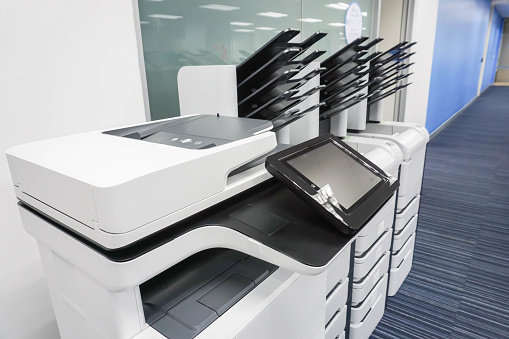 For companies with tight cash flow, leasing equipment (computer and other office) is often more desirable than installment purchasing. It requires a smaller up-front payment and the payments over the term of the lease are smaller because the lessor can take the equipment back at the end of the lease or sell it to the lessee. If entering into a lease arrangement, it is important to: (1) determine the interest rate the lessor is using and compare it with the rate on an installment purchase of the equipment; (2) obtain the exact price to be paid for purchasing the equipment at the end of the lease term, and (3) review any conditions pursuant to which the lessor can impose added fees at the termination of the lease if the equipment is not purchased. The lessor often obscures the information, so that many clients who decide to lease costly business equipment often seek the assistance of their CPAs as well as their lawyer’s in reviewing the leasing arrangement before they finalize a deal.
For companies with tight cash flow, leasing equipment (computer and other office) is often more desirable than installment purchasing. It requires a smaller up-front payment and the payments over the term of the lease are smaller because the lessor can take the equipment back at the end of the lease or sell it to the lessee. If entering into a lease arrangement, it is important to: (1) determine the interest rate the lessor is using and compare it with the rate on an installment purchase of the equipment; (2) obtain the exact price to be paid for purchasing the equipment at the end of the lease term, and (3) review any conditions pursuant to which the lessor can impose added fees at the termination of the lease if the equipment is not purchased. The lessor often obscures the information, so that many clients who decide to lease costly business equipment often seek the assistance of their CPAs as well as their lawyer’s in reviewing the leasing arrangement before they finalize a deal.
Download Printable Article PDF>>>
How about the actual accounting side of leasing equipment?
Have a lot of debt on your balance sheet? Concerned that you may not be able to obtain bank loans to provide sufficient capital to finance your business operations? Well, one factor that might make a difference is whether you obtain the use of computers, office equipment, vehicles or even machinery under a capital or operating lease. When you use a capital lease, the accounting treatment is the same as if you purchased the equipment. Thus, the cost, equal to the present value of the lease payments, is reflected as an asset on your balance sheet, while an equal amount, the lease obligation, is reflected as a liability. The effect is to increase your debt to equity ratio, a critical measure used by lenders to determine whether additional loans should be made. Conversely, if you have an operating lease, the accounting treatment is as if you were merely renting use of the equipment. Consequently, neither the cost of the equipment nor the rental obligation appears on the balance sheet, and rent expense is reflected in the income statement as you make the rental payments.
What distinguishes a capital lease from an operating lease? In an operating lease when leasing equipment?
1. There can’t be any transfer of ownership of the property to your business.
2. The lease may not contain a bargain purchase option permitting your firm to obtain the property at below market value at the end of the lease term.
3. The term of the lease should be for less than 75% of the estimated useful life of the leased property.
4. The present value of all lease payments should be less than 90% of the fair market value of the leased property.
If these requirements can’t be satisfied, the lease should be treated for accounting purposes as a capital lease since the transaction is viewed as being an installment purchase. It’s clear that the terms of the underlying lease contract directly affect the accounting, and indirectly, the firm’s borrowing capacity.
Here is another area where the advice and skill of your CPA and your lawyer, can make a difference in your business prospects. Leasing real estate? Well, add WCRE to the team.
For More Information About Leasing Equipment
Martin H. Abo, CPA/ABV/CVA/CFF is a principle of Abo and Company, LLC and its affiliate, Abo Cipolla Financial Forensics, LLC, Certified Public Accountants – Litigation and Forensic Accountants. With offices in Mount Laurel, NJ and Morrisville, PA, tips like the above can also be accessed by going to the firm’s website at www.aboandcompany.com.



